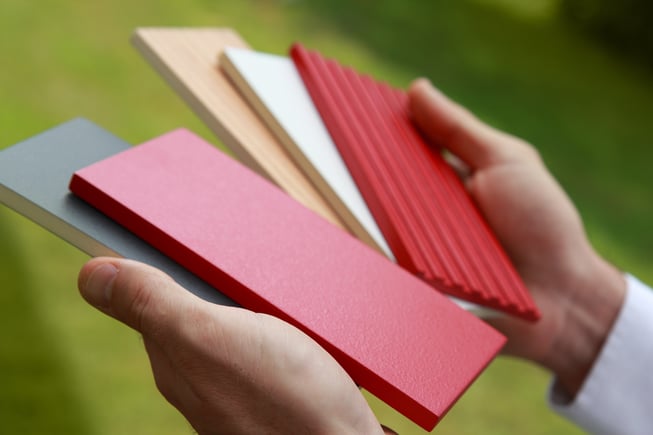If you look at any of the plastic parts immediately around you, chances are that most of them have been injection molded. Of course, if you’re at a Boulder climbing gym, most of the plastic there is a little different—it’s poured. In any case, you’ll notice that not only do many plastic parts look very different, but they feel very different too. The surfaces and textures on plastic parts may span a large range of common options in the injection molding industry.
One method of changing the look and feel of a piece of plastic is done in the mold itself. Because the part is formed in the mold, it receives the texture of the tool. If the mold still has tooling marks, then all the plastic parts it produces will also have tooling marks. This makes calling out the correct mold finish extremely important for injection molding.

Some of the most common textures were initially designated by the Society of the Plastics Industry (SPI), a group founded in the 1930s. Responsible for the numbers on the bottom of recyclable packages and bottles, the SPI also created a standard for mold finishes known almost ubiquitously across mold manufactures. Though these have evolved across the years, the current finishes are all called out as “SPI X-n” where the X indicates the type of finish and N defines the roughness:
SPI A-n, Diamond Finishes
- SPI A-1 – 6000 grit, grade #3, diamond buff. This is your common shiny mirror finish.
- SPI A-2 – 3000 grit, grade #6, diamond buff
- SPI A-3 – 1200 grit, grade #15, diamond buff
SPI B-n, Paper Finishes
- SPI B-1 – 600 grit paper. Still a glossy finish, but less reflective than the diamond polishes.
- SPI B-2 – 400 grit paper
- SPI B-3 – 320 grit paper
SPI C-n, Stone Finishes
- SPI C-1 – 600 grit stone
- SPI C-2 – 400 grit stone
- SPI C-3 – 320 grit stone
SPI D-n, Dry Blast Finishes
- SPI D-1 – 600 grit stone and bead blast
- SPI D-2 – 400 grit stone and bead blast
- SPI D-3 – 320 grit stone and bead blast
Because the SPI D finishes are a little more vague than the other finishes, we don’t often use them. The blasting media introduces a textured finish that is highly dependent on the blasting media. If such a finish is desired, samples should be requested from any potential mold manufacturer.
To get more specialized and more defined textured finishes, there are other options. A group of mold and part textures has been developed by Mold-Tech, a private company that specializes in texturization. These finishes are often more difficult to produce but can be much more visually attractive than a simple SPI A-3 polish. If you have a slightly textured plastic piece nearby, it might have been finished with MT-11010, one of the most common textures used in molded parts. Lately, however, even finer textures have become commonplace to create a soft-touch feel on phone cases, computer mice, and other consumer products.
More unique textures exist like MT-11440, which looks like brushed metal, or others that look like 1970s vinyl, if that’s your style. Though these textures can be used on most injection molded parts, it is important to know when they can’t be used and when certain design features (like a shallow draft angle) would inhibit certain types of finishes. If you need assistance choosing a texture or understanding the different options, stop by BES and we can show you a collection of sample parts or help you design with a certain finish in mind.
Besides surface textures, there are a host of part finishes (like paint) that can be applied after the part is molded. Look for an upcoming post from BES for a rundown on some of the most common post-mold finishes.
Interested in learning more about Boulder Engineering Studio? Let's chat!
.svg)







